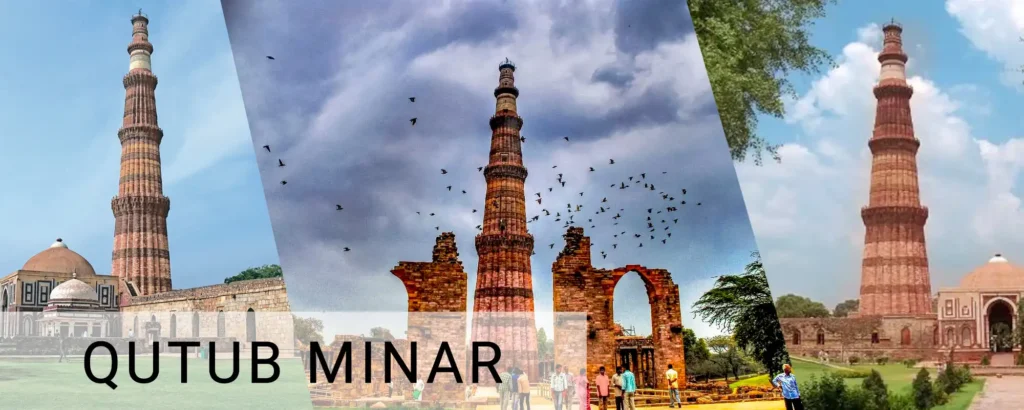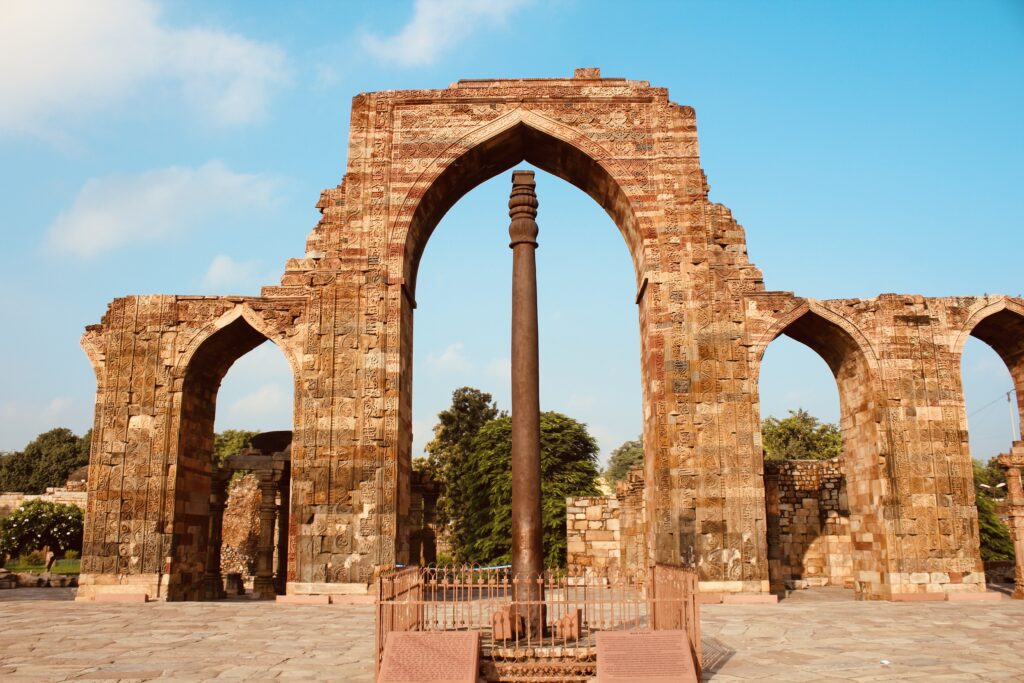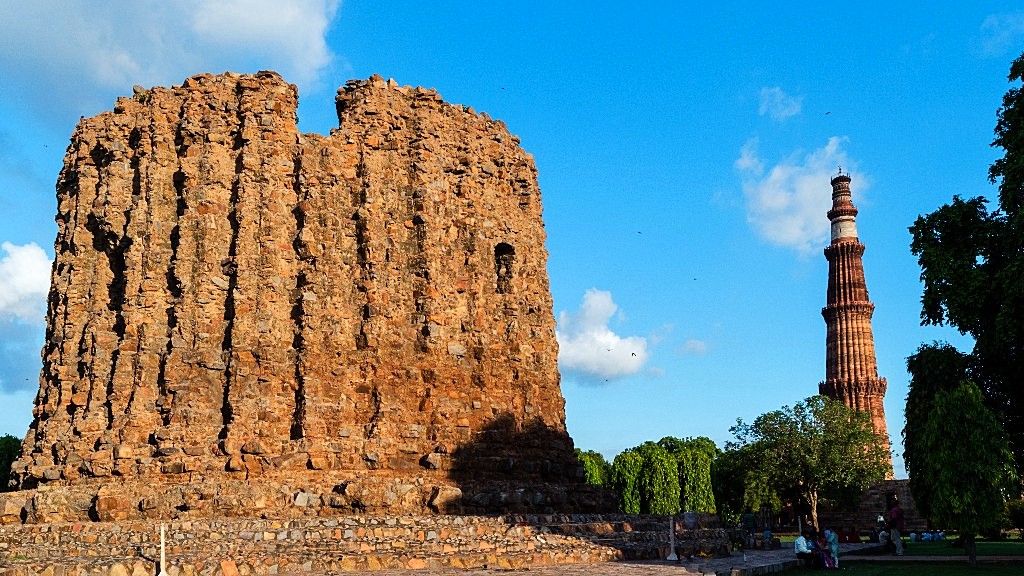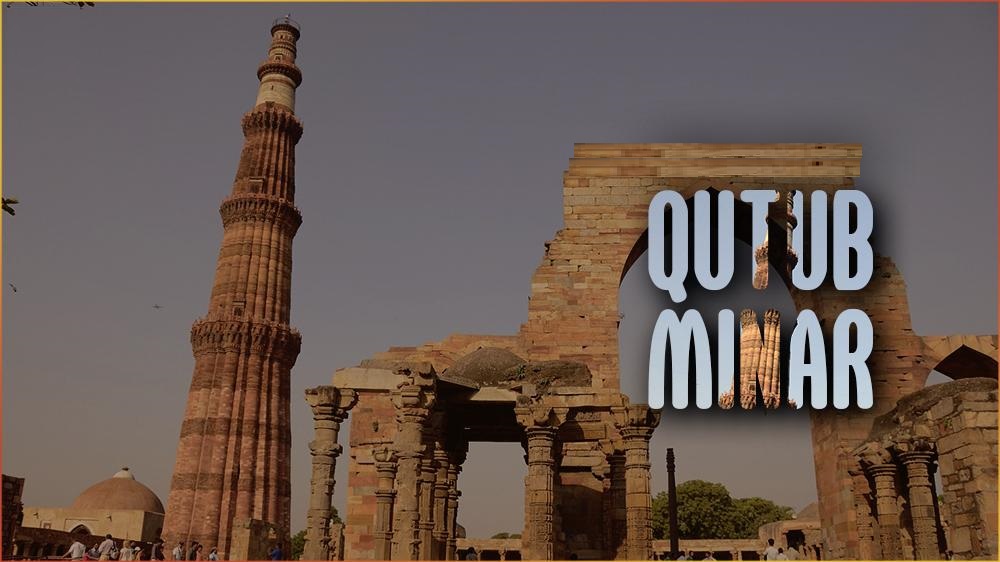Delhi is the capital city of India and it’s a rich metropolitan city that perfectly blends ancient history with modern urbanity. Delhi has acquired a massive prevalence among travelers and individuals from everywhere in the world like Agra, Jaipur. If you want to travel to these three destinations then book Golden Triangle tour 6 Days and get to know more about the Mughal and Rajput architecture.. Delhi city is famous for its rich culture and legacy. Delhi imparts its borders to Haryana and Uttar Pradesh. They partition the capital city into two sections. First is Old Delhi and the other one is New Delhi. Delhi offers a unique blend of the old and new, from the majestic Red Fort to the serene Lodhi Gardens.
Qutub Minar Seth Sarai Mehrauli New Delhi is one of the most iconic monuments in Delhi, India. It is a victory tower that is part of the Qutub complex. The Tomar Rajputs founded Delhi’s oldest fortified city, Lal Kot, where Qutub Minar is located. It is a UNESCO World Heritage Site in the Mehrauli area of South Delhi. They built Qutub Minar between 1199 and 1220, and it has 399 steps. Historical structures surround Qutub Minar, and it attracts millions of tourist every year. In this in-depth guide we will explore the history, architecture, key attractions and basic tips for visiting Qutub Minar Seth Sarai Mehrauli New Delhi.
History of Qutub Minar Seth Sarai Mehrauli New Delhi
Qutb-ud-din Aibak built Qutub Minar, a UNESCO World Heritage site. After defeating Prithviraj Chauhan, last ruler of Hindu kingdom in Delhi in 1192. Iltutmish, Qutb-ud-din Aibak’s successor, completed the construction of Qutub Minar. This 73-meter-high tower not only symbolizes the victory of Islamic rule in India but is also an architectural marvel of the medieval period.

Qutb-ud-din Aibak is a deputy of Mohammad Ghori. who founded the Delhi Sultanate after the death of Mohammad Ghori. The construction of the Qutub Minar’s first story started in 1199. The son in law of Aibak’s Shamsuddin Iltutmish completed a further three floors. The fifth and final floor was built by Firoz Shah Tughlaq in 1368.
Architectural Significance
The Qutub Minar is a classic example of Indo-Islamic Afghan architecture. They primarily constructed this monument from red sandstone and marble. Qutub Minar has intricate carvings and verses from the Quran, and it has five different stories. Each story features a protruding balcony. In Qutub Minar, they made the first three stories from red sandstone, while they constructed the fourth and fifth stories from marble and sandstone.
Key Attractions And Activities in Delhi
| Attraction | Description | Activities |
| Quwwat-ul-Islam Mosque | The first mosque built in India, using materials from 27 dismantled Hindu and Jain temples. | Historical Exploration, Photography |
| Iron Pillar | A 7-meter tall iron pillar known for its rust-resistant composition and ancient inscriptions. | Viewing, Learning about ancient metallurgy |
| Alai Minar | An unfinished tower that was intended to be twice the height of Qutub Minar. | Historical Exploration, Photography |
| Red Fort | A historic fort and a symbol of India’s rich past. | Guided Tours, Light and Sound Show |
| India Gate | A war memorial dedicated to soldiers of the Indian Army. | Sightseeing, Evening Walks |
| Humayun’s Tomb | A UNESCO World Heritage site and a precursor to the Taj Mahal. | Exploring Mughal Architecture, Photography |
| Lotus Temple | A Bahá’í House of Worship, noted for its flower-like shape. | Meditation, Architectural Tours |
| Akshardham Temple | A sprawling temple complex known for its stunning architecture and cultural exhibitions. | Cultural Exhibitions, Boat Ride |
| Chandni Chowk | One of the oldest and busiest markets in Old Delhi. | Shopping, Street Food, Heritage Walks |
Quwwat-ul-Islam Mosque
The meaning of Quwwat-ul-Islam Mosque was Power of Islam. The Mosque was built by demolishing 27 Hindu and Jain temples. This mosque is a prime example of the fusion of Islamic and indigenous architectural styles. They made it from red sandstone, gray quartz, and white marble, probably drawing inspiration from the “Iron Pillar” that stands at this site. Built by the Gupta dynasty in the 6th century, it is the only piece of the temple that stands at its original location.
Iron Pillar
The Iron Pillar is standing at 7.21 Meters (23 Feet & 8 inches) high with a diameter of 41 centimeters (16 inches) and weighing over 6 tons. Great Chandragupta II constructed this pillar. It is an ancient metallurgical marvel, carved with a Sanskrit inscription, and has resisted rusting for over 1,500 years, showcasing the advanced knowledge of metallurgy in ancient India. Now stands in the Qutub complex of Qutub Minar seth sarai mehrauli New Delhi.

Alai Minar
Sultan Alauddin Khilji, who ruled from 1296 to 1316, is known for his military conquests and administrative reforms. He is one of the most notable rulers of the Delhi Sultanate. Inspired by the success of the Qutb Minar, Alauddin conceived of a minaret that would dwarf its scale, symbolizing his power and the prosperity of his empire. He wants to leave an indelible mark on history, which is why he started the construction of Alai Minar. However, the untimely death of the Khilji in 1316 halted the progress and the structure remained incomplete. Today, UNESCO lists the Alai Minar as a World Heritage Site, and it is part of the Qutub Minar Seth Sarai Mehrauli New Delhi complex.

Visiting Qutub Minar Seth Sarai Mehrauli New Delhi
The best time to visit Qutub Minar seth sarai mehrauli New Delhi is from October to March. When the weather is cool and more pleasant. If you want to explore this place less crowded than sunrise or late afternoon is the best for you. The visiting time of Qutub minar is 7 AM to 5 Pm and this monument remains open on all days of the week.
How To Reach
By Metro: Qutub Minar Metro Station on Yellow Line is the nearest metro station. After taking the exit from the metro station, one can also take shared autos or personal auto to reach Qutub Minar.
By Bus: Several Delhi Transport Corporation (DTC) buses connect Qutub Minar to various parts of Delhi. Bus numbers 505, 506, 507, and 548 are some of the options.
By Car: Visitors can easily reach the site by road and hire taxis or use ride-sharing services like Ola and Uber.
Conclusion
Anyone interested in the rich historical tapestry of India must visit Qutub Minar Seth Sarai Mehrauli New Delhi. From its towering minaret to the surrounding ancient structures, every part of this complex tells a story of a bygone era. Whether you’re a history buff, an architecture enthusiast, or just a curious traveler, Qutub Minar offers something for everyone. Plan your visit during the cooler months, and immerse yourself in the grandeur of one of India’s most iconic monuments.
FAQs About Qutub Minar Seth Sarai Mehrauli New Delhi
Is Qutub Minar built at Mehrauli in Delhi?
Yes, Qutub Minar is located in the Mehrauli area of New Delhi. It is part of the Qutub Complex, which includes several other historic monuments and structures.
Which day is Qutub Minar closed?
Qutub Minar is open to visitors every day of the week. It does not have a designated day of closure.
What is the ticket price of Qutub Minar?
The ticket price for visiting Qutub Minar is ₹40 for Indian citizens and ₹600 for foreign nationals. There may be additional charges for photography or video recording.
Which part of Delhi is Qutub Minar?
Qutub Minar is situated in the Mehrauli area of South Delhi. It is easily accessible via public transport, including the Delhi Metro and buses.
Can I visit Qutub Minar at night?
No, Qutub Minar is not open for visits at night. The monument is open to visitors from 7 AM to 5 PM daily. It is best to plan your visit during these hours.
What is special in Qutub Minar?
Qutub Minar is renowned for being the tallest brick minaret in the world, standing at 73 meters. Its intricate carvings, Quranic inscriptions, and historical significance make it a unique and special monument. It is part of the larger Qutub Complex, which includes other notable structures such as the Quwwat-ul-Islam Mosque and the Iron Pillar.
Which metro is Qutub Minar?
The nearest metro station to Qutub Minar is the Qutub Minar Metro Station, located on the Yellow Line of the Delhi Metro. From the station, it is a short rickshaw ride to the Qutub Minar complex.





